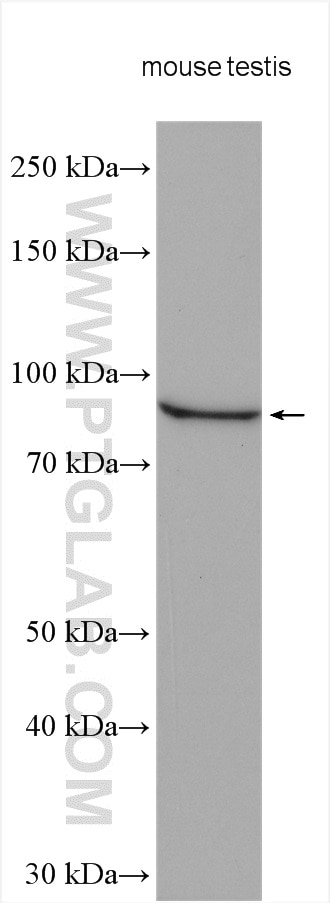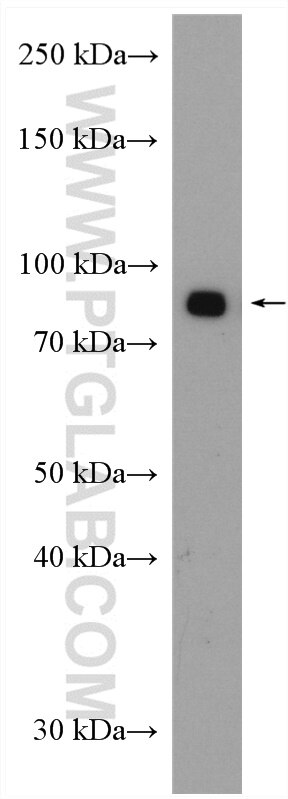Anticorps Polyclonal de lapin anti-TGFBRAP1
TGFBRAP1 Polyclonal Antibody for WB, ELISA
Hôte / Isotype
Lapin / IgG
Réactivité testée
Humain, souris
Applications
WB, ELISA
Conjugaison
Non conjugué
N° de cat : 20153-1-AP
Synonymes
Galerie de données de validation
Applications testées
| Résultats positifs en WB | tissu testiculaire de souris, |
Dilution recommandée
| Application | Dilution |
|---|---|
| Western Blot (WB) | WB : 1:500-1:2000 |
| It is recommended that this reagent should be titrated in each testing system to obtain optimal results. | |
| Sample-dependent, check data in validation data gallery | |
Informations sur le produit
20153-1-AP cible TGFBRAP1 dans les applications de WB, ELISA et montre une réactivité avec des échantillons Humain, souris
| Réactivité | Humain, souris |
| Hôte / Isotype | Lapin / IgG |
| Clonalité | Polyclonal |
| Type | Anticorps |
| Immunogène | TGFBRAP1 Protéine recombinante Ag13698 |
| Nom complet | transforming growth factor, beta receptor associated protein 1 |
| Masse moléculaire calculée | 97 kDa |
| Poids moléculaire observé | 80-97 kDa |
| Numéro d’acquisition GenBank | BC020548 |
| Symbole du gène | TGFBRAP1 |
| Identification du gène (NCBI) | 9392 |
| Conjugaison | Non conjugué |
| Forme | Liquide |
| Méthode de purification | Purification par affinité contre l'antigène |
| Tampon de stockage | PBS avec azoture de sodium à 0,02 % et glycérol à 50 % pH 7,3 |
| Conditions de stockage | Stocker à -20°C. Stable pendant un an après l'expédition. L'aliquotage n'est pas nécessaire pour le stockage à -20oC Les 20ul contiennent 0,1% de BSA. |
Informations générales
TGFBRAP1, also named as TGF-beta receptor-associated protein 1 or TRAP1, is a 860 amino acid protein, which contains one CHCR (clathrin heavy-chain) repeat and one CNH domain. TGFBRAP1 localizes in the cytoplasm and belongs to the TRAP1 family. TGFBRAP1 plays a role in the TGF-beta/activin signaling pathway.
Protocole
| Product Specific Protocols | |
|---|---|
| WB protocol for TGFBRAP1 antibody 20153-1-AP | Download protocol |
| Standard Protocols | |
|---|---|
| Click here to view our Standard Protocols |



